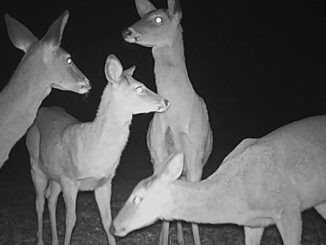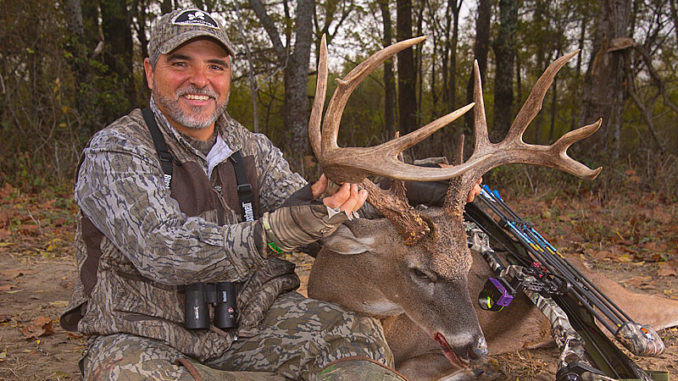
The October afternoon sun slanted through the oak and hackberry, prompting me to reach for my phone and snap a quick photograph. I thought back to the August day when I’d located the pinch point I was presently seated above. The weather was now 20 degrees cooler, and the mosquitoes who seemed intent on making life miserable were now gone. As I posted the photo to my Facebook page, I wrote, “S42 E1”, a reference to it being my 42nd year of archery hunting and the first hunt of the new season. As I sat reflecting on how much bow hunting had changed over that period of time, I caught movement along the riverbank, where a family of does and yearlings slowly made their way towards my stand. In total there were seven deer in the group, spread out and searching the ground for signs of early acorns or possibly honey locust pods. I picked the largest of the group, and slowly drew my bow when she closed to within 25 yards. As soon as I released the arrow I knew something was wrong. First I heard a loud slap, followed by the sight of my arrow careening off into the woods, finally coming to rest at an awkward angle in the soft earth, no where near where the big doe had been standing.
I knew my arrow had hit a limb, one that I had obviously failed to trim when I’d first hung the stand back. Immediately I was reminded of the importance of early season planning and more importantly, why early season archery in my humble opinion is the most difficult time of the hunting season to be successful.
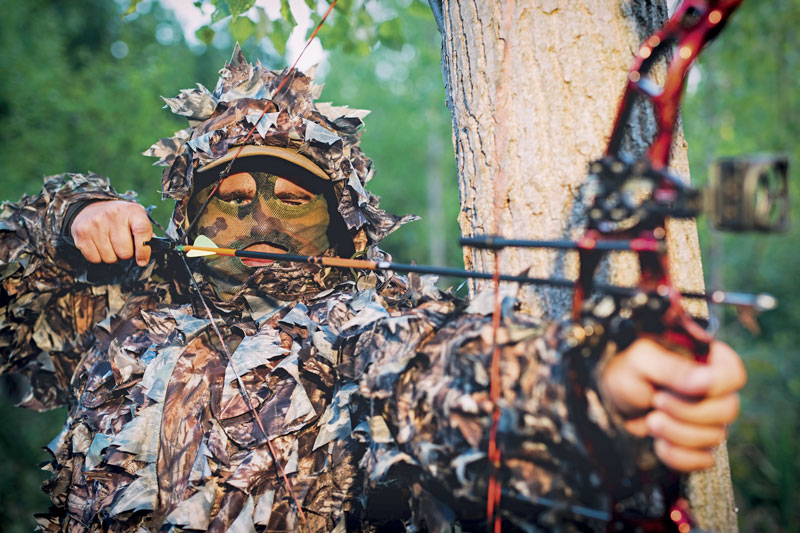
Practice makes perfect
There’s absolutely no substitute for practice. You can walk into any store in Louisiana that sells archery gear, purchase the most expensive bow they have, pair it with the most expensive arrows, sight and release, and if you don’t practice, you will fail. Longtime Louisiana bow hunting guru Rodney Denton has been selling archery equipment for four decades, and during that time he’s seen tremendous shifts in bow technology.
“The bows are so much better now,” he said. “They shoot better than before and it seems like every year they come out with new technology that makes them even better. However, there will never be a substitute for practice.”
And according to Denton, how you practice is just as important.
“You don’t want to be shooting arrows down range at the same distance,” he said. “You need to mix it up, and you also need to practice at longer distances than you ever anticipate shooting while on the stand. If you can consistently hit a target at 80 yards, imagine how proficient you’ll be at 40.”
He also advises shooting from an elevated position if you’ll be hunting from a tree stand, and doing the same from a ground blind if you plan on using one.
It doesn’t take a lot of arrows, it takes just a few shots several times a week once you’re dialed in and comfortable with your setup.
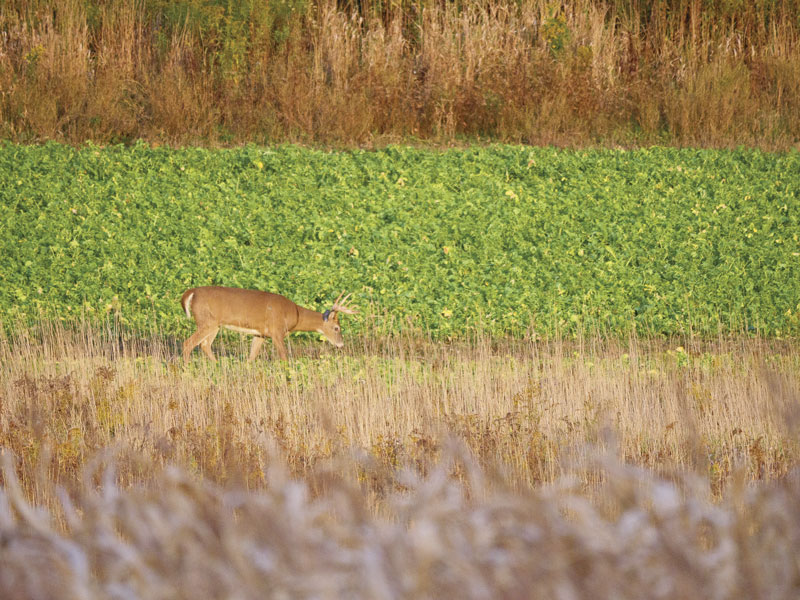
Quiet is king
Louisiana native and world class bow hunter Chuck Jones has spent as many or more days on a deer stand than anyone. With over three decades spent in the outdoor industry serving as a cameraman and later producer for companies such as Primos Hunting, Realtree and Knight & Hale, Jones makes it clear that early season requires more planning and patience than any other time of the hunting season.
“Early season mature bucks will not tolerate being bumped,” he said. “They’ll either leave the area or go nocturnal and if you’re lucky to see them again it will probably be during the rut.”
Jones stresses the need for low pressure scouting.
“You can’t just go stomping around the woods in September and expect to be successful in October,” he said. “You have to put a lot of forethought into what you’re doing and formulate a plan.”
For Jones, that plan involves the use of cellular trail cameras setup on pinch points and trails between bedding and feeding areas.
“Don’t take any shortcuts,” he said. “Make sure your trail camera has new batteries so you don’t have to go back and put new ones in. If you have to go into the area, make sure the wind isn’t blowing your scent into where deer may be bedding.”
Jones also believes that afternoons are much better than mornings for early season.
“It’s almost like late season, when deer are focused primarily on food sources, meaning while some deer will feed early, more of them will be feeding in the afternoons,” he said.
He suggests that if you want to hunt mornings, be sure you pick a spot that you can enter almost silently.
Finally, Jones warned to make sure your stand is quiet.
“Do some offseason maintenance and make sure you don’t have anything that squeaks or makes noise,” he said.
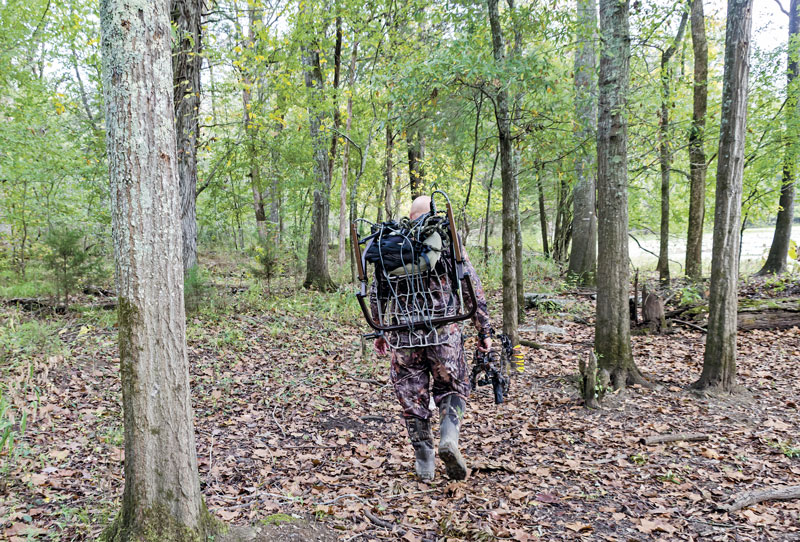
Old school
For south Louisiana native and longtime Primos Hunting crew member Troy Ruiz, the older methods are often times best for early season.
“Early season is one of those times when some solid scouting for natural food sources can actually tilt the odds of killing a mature buck in your favor,” he said.
Ruiz recommends looking for pokeweed, sumac, muscadine, honeysuckle, persimmon and honey locust.
“Deer don’t live off food plots,” he said. “Likewise, they also don’t feed exclusively on corn. Deer are browsers, which means they want to move while they feed. Natural food sources offer them the best opportunity to do this.”
When asked what his favorite early season food source to hunt would be, Ruiz quickly stated white oaks.
“If you can find a white oak dropping, you can forget about everything else, you’ve found the mecca,” he said. “Over the years I’ve seen countless numbers of deer walk through and past all other food sources to reach a white oak that’s dropping acorns. It’s really impressive to see and it gives you a real idea of just how powerful of an attractant it is.”
He went on to add that part of his early season scouting revolves around simply walking and listening late in the evenings.
“On still and quiet afternoons, I can often listen and hear acorns falling in the woods,” he said.
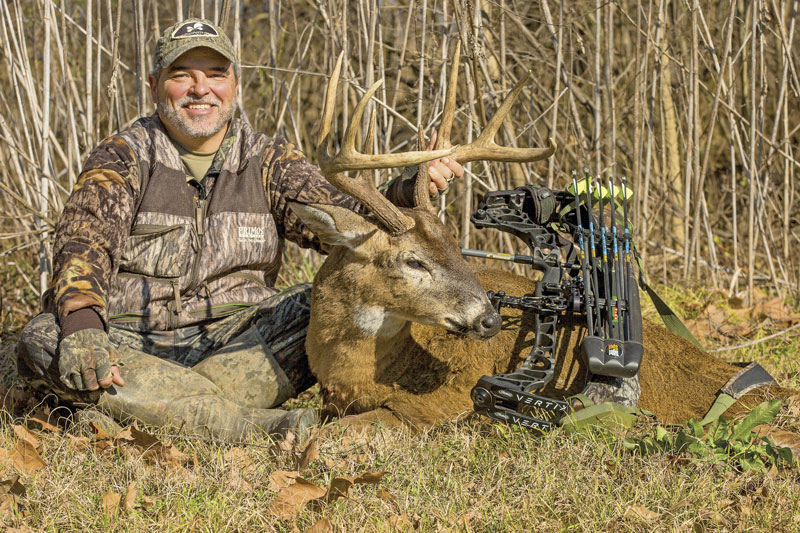
Be patient
Finally, if you can, be patient and wait for a front that may cause temperatures to drop. While just being in the woods is always fun, waiting for the conditions to get right will often make the trip much more enjoyable and successful. Watch the wind and never hunt a stand when the wind isn’t right, regardless of what scent elimination system you may be using. By not doing so you’ll risk doing more harm than good.

